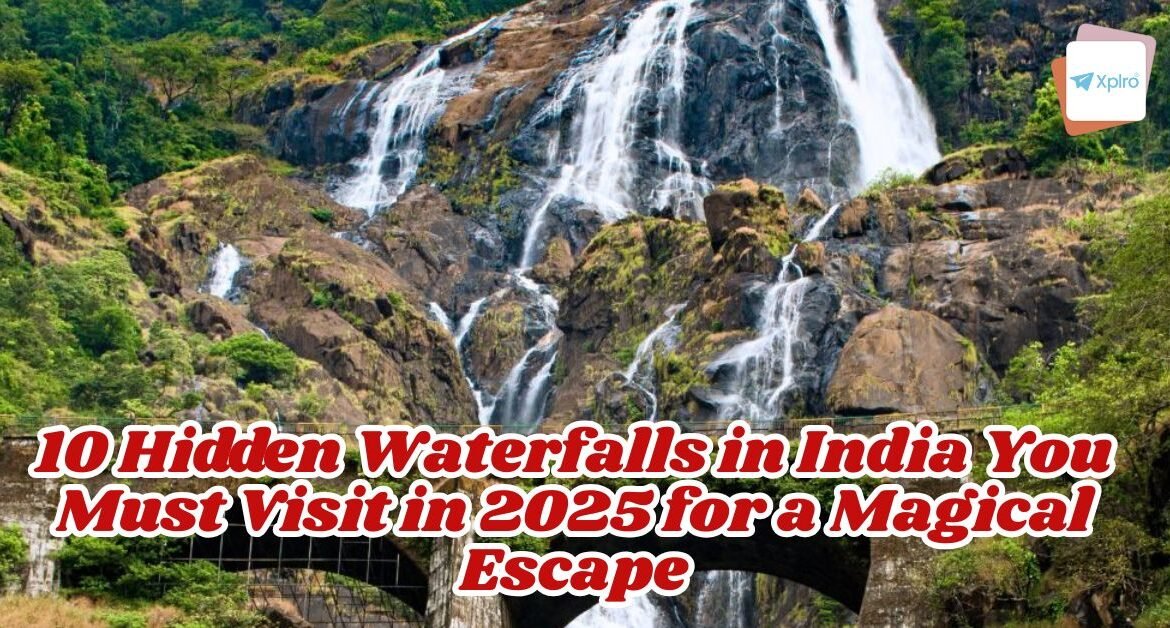India is home to some of the most breathtaking waterfalls in the world — yet many remain hidden deep within its forests, valleys, and mountains. In this blog, we reveal the 10 hidden waterfalls in India you must visit in 2025 for a truly magical and offbeat experience. From the misty hills of Meghalaya to the untouched corners of Kerala and Karnataka, these secret cascades offer the perfect escape for nature lovers and adventure seekers alike.
Forget the crowded tourist spots — these waterfalls are where nature whispers in its purest form. Each destination brings you closer to the raw beauty of India’s landscapes, ideal for trekking, photography, and peaceful getaways. Whether you crave a remote jungle trail or a serene natural pool, this guide will take you to the hidden gems of India’s wilderness that promise a rejuvenating, soul-soothing journey in 2025.
- 1. Bhagsunag Waterfall, Himachal Pradesh
- 2. Nuranang Falls (Jang Falls), Arunachal Pradesh
- 3. Vantawng Falls, Mizoram
- 4. Kune Falls, Maharashtra
- 5. Thommankuthu Falls, Kerala
- 6. Irupu Falls, Karnataka
- 7. Chachai Falls, Madhya Pradesh
- 8. Sita Falls, Jharkhand
- 9. Khandadhar Falls, Odisha
- 10. Patalpani Falls, Madhya Pradesh
- Comparison Table: Hidden Waterfalls in India
- Conclusion
- FAQs
1. Bhagsunag Waterfall, Himachal Pradesh
- Location: McLeod Ganj, Dharamshala Height: ~20 meters Best Time to Visit: March to June
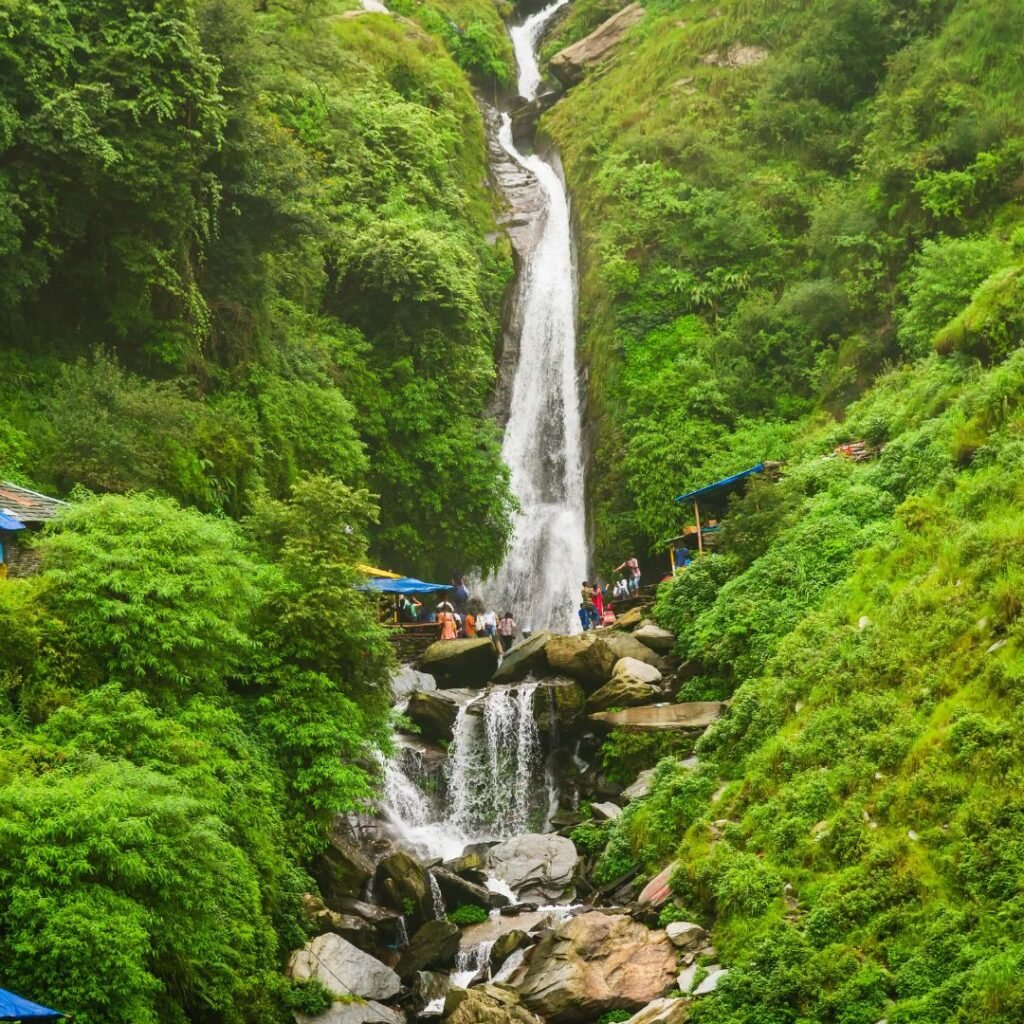
Nestled in the serene hills of McLeod Ganj, Bhagsunag Waterfall is a short trek from the Bhagsunath Temple. Though not the tallest, its charm lies in the lush surroundings and the spiritual ambiance. The cascading water forms a natural pool, perfect for a refreshing dip.
Why It’s Magical: The blend of Tibetan culture, mountain air, and the sound of falling water creates a meditative experience.
2. Nuranang Falls (Jang Falls), Arunachal Pradesh
- Location: Near Tawang Height: ~100 meters Best Time to Visit: March to October
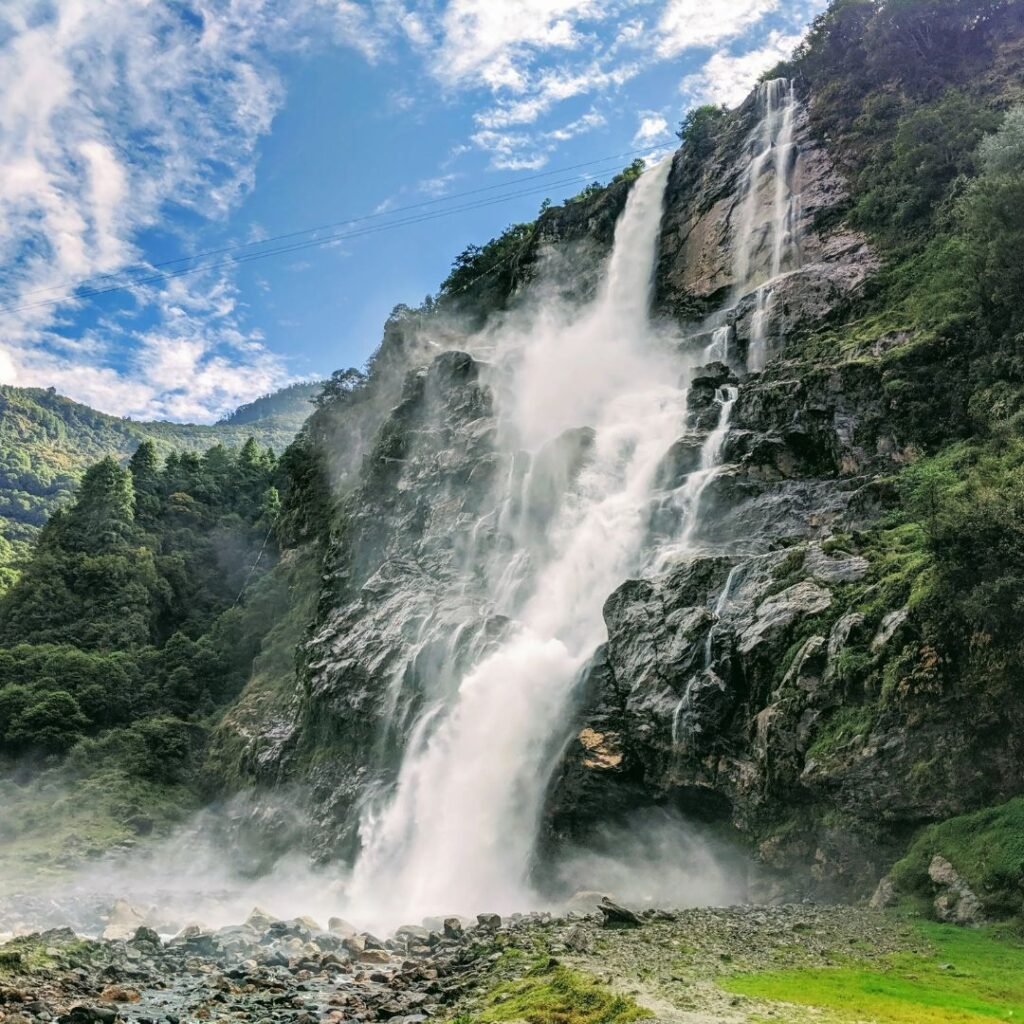
Often called the “Niagara of the East,” Nuranang Falls is a hidden gem in the Eastern Himalayas. Surrounded by pine forests and misty hills, it’s a sight to behold. The waterfall is named after a local Monpa girl who helped an Indian soldier during the 1962 war.
Why It’s Magical: The untouched beauty and historical significance make it a soulful destination.
3. Vantawng Falls, Mizoram
- Location: Near Thenzawl Height: ~229 meters Best Time to Visit: September to January
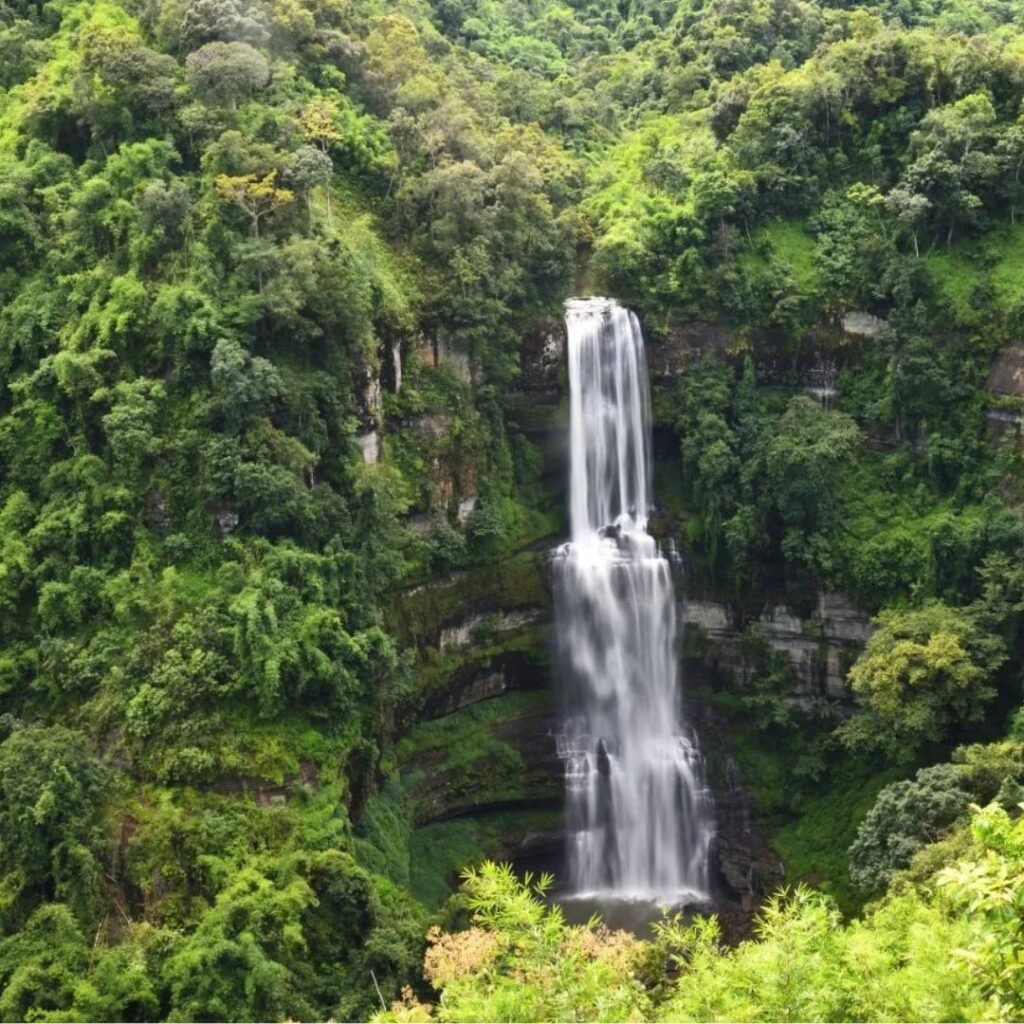
Vantawng Falls is the highest waterfall in Mizoram and one of the most spectacular in the Northeast. Hidden amidst dense bamboo forests, it’s visible from a viewing tower built for tourists.
Why It’s Magical: The waterfall appears like a white ribbon dancing down the cliffs—ethereal and mesmerizing.
4. Kune Falls, Maharashtra
- Location: Lonavala Height: ~200 meters Best Time to Visit: July to September
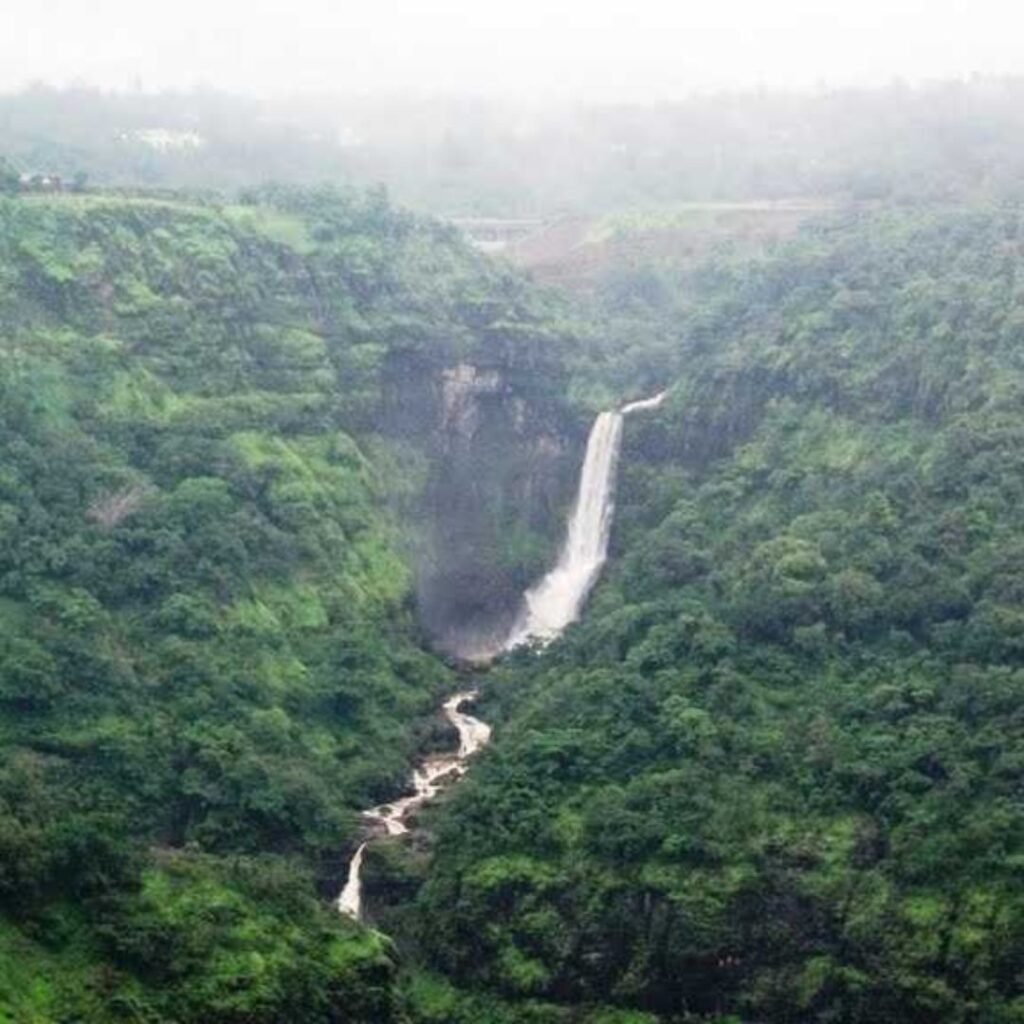
Located in the lush Sahyadri ranges, Kune Falls is a three-tiered beauty near Khandala. Though close to Mumbai and Pune, it remains relatively unexplored due to limited signage and access.
Why It’s Magical: The monsoon transforms the region into a green paradise, with the waterfall roaring in full glory.
5. Thommankuthu Falls, Kerala
- Location: Idukki District Height: ~40 meters Best Time to Visit: September to May
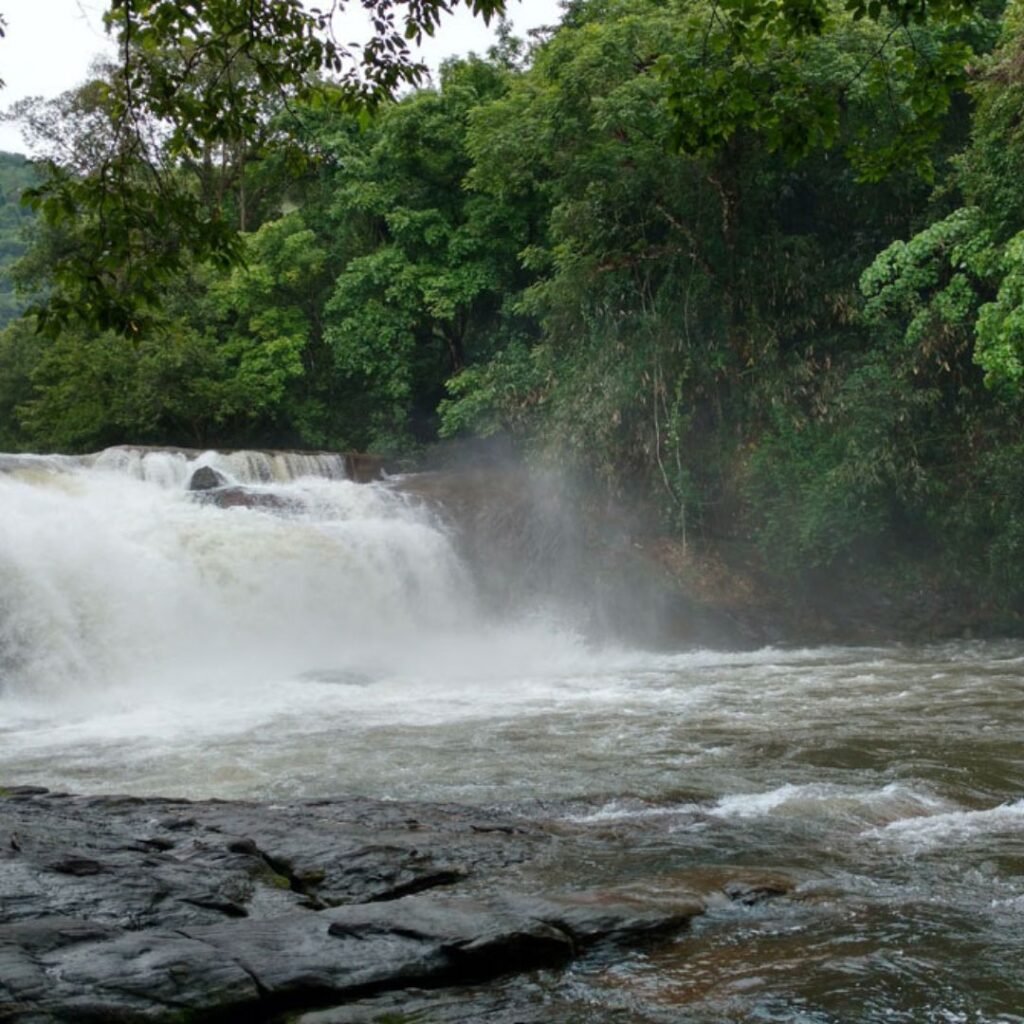
Thommankuthu is a seven-step waterfall nestled in the Western Ghats. Each level has a pool, making it ideal for trekking and swimming. The surrounding forest is rich in biodiversity.
Why It’s Magical: A trek through the forest reveals multiple cascades, each more enchanting than the last.
6. Irupu Falls, Karnataka
- Location: Coorg Height: ~170 feet Best Time to Visit: August to January
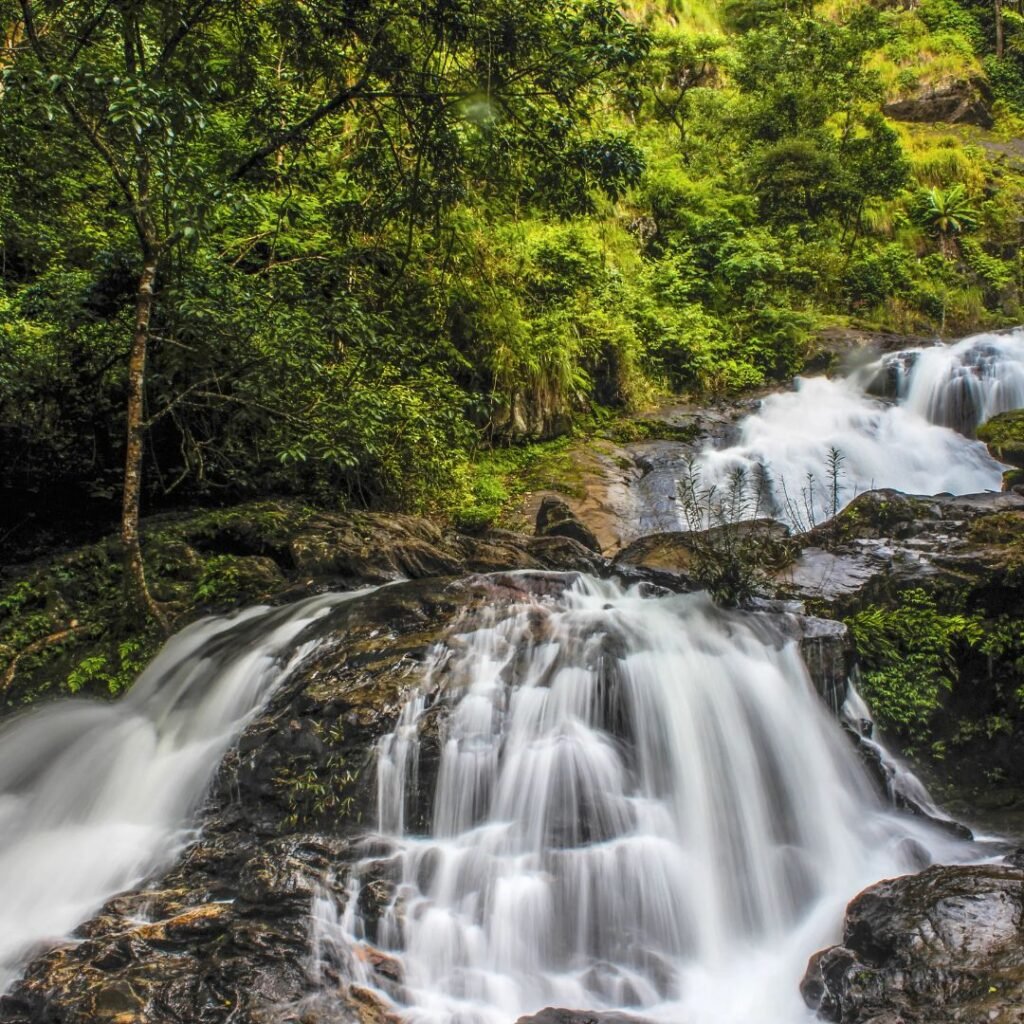
Irupu Falls is located in the Brahmagiri Range and is considered sacred by locals. The trail to the falls is scenic, passing through coffee plantations and dense forests.
Why It’s Magical: The spiritual aura and the sound of water crashing through the forest make it a rejuvenating experience.
7. Chachai Falls, Madhya Pradesh
- Location: Rewa District Height: ~130 meters Best Time to Visit: July to October
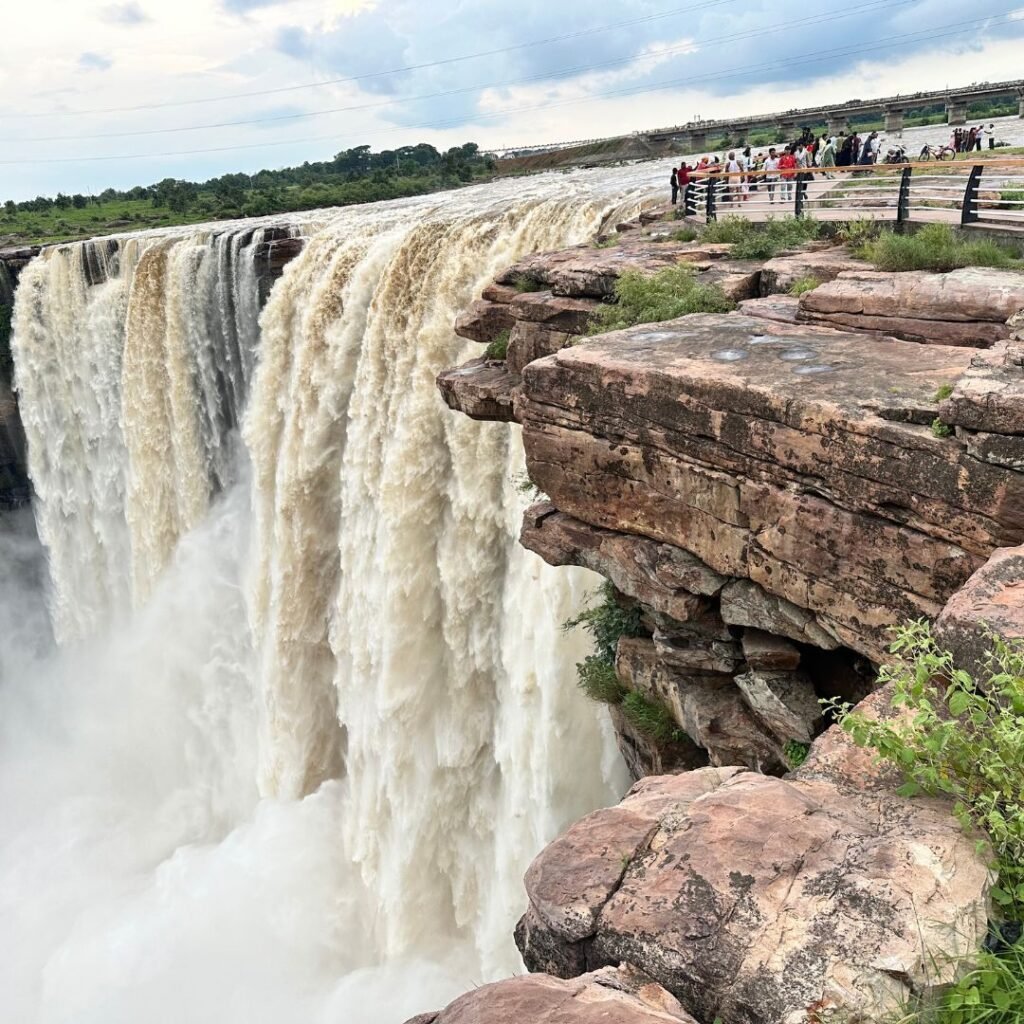
Chachai Falls is formed by the Bihad River and plunges dramatically off the Rewa Plateau. It’s part of the Purwa Falls system and remains largely unknown to mainstream tourists.
Why It’s Magical: The sheer drop and surrounding cliffs offer a dramatic landscape perfect for photography.
8. Sita Falls, Jharkhand
- Location: Ranchi District Height: ~44 meters Best Time to Visit: August to February
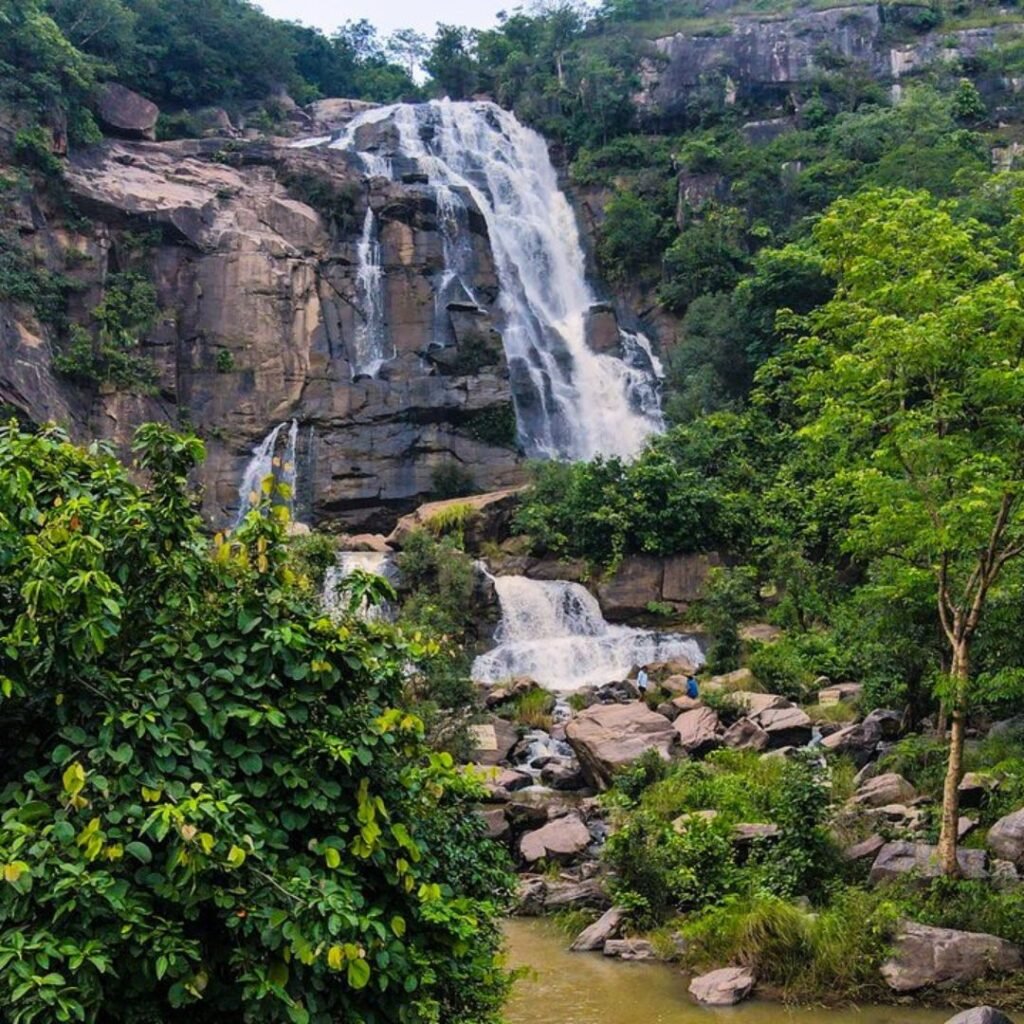
Named after Goddess Sita, this waterfall is located in a quiet forested area near Ranchi. The trek to the falls is short but scenic, passing through tribal villages and bamboo groves.
Why It’s Magical: Mythology meets nature in this serene escape.
9. Khandadhar Falls, Odisha
- Location: Sundergarh District Height: ~244 meters Best Time to Visit: October to February
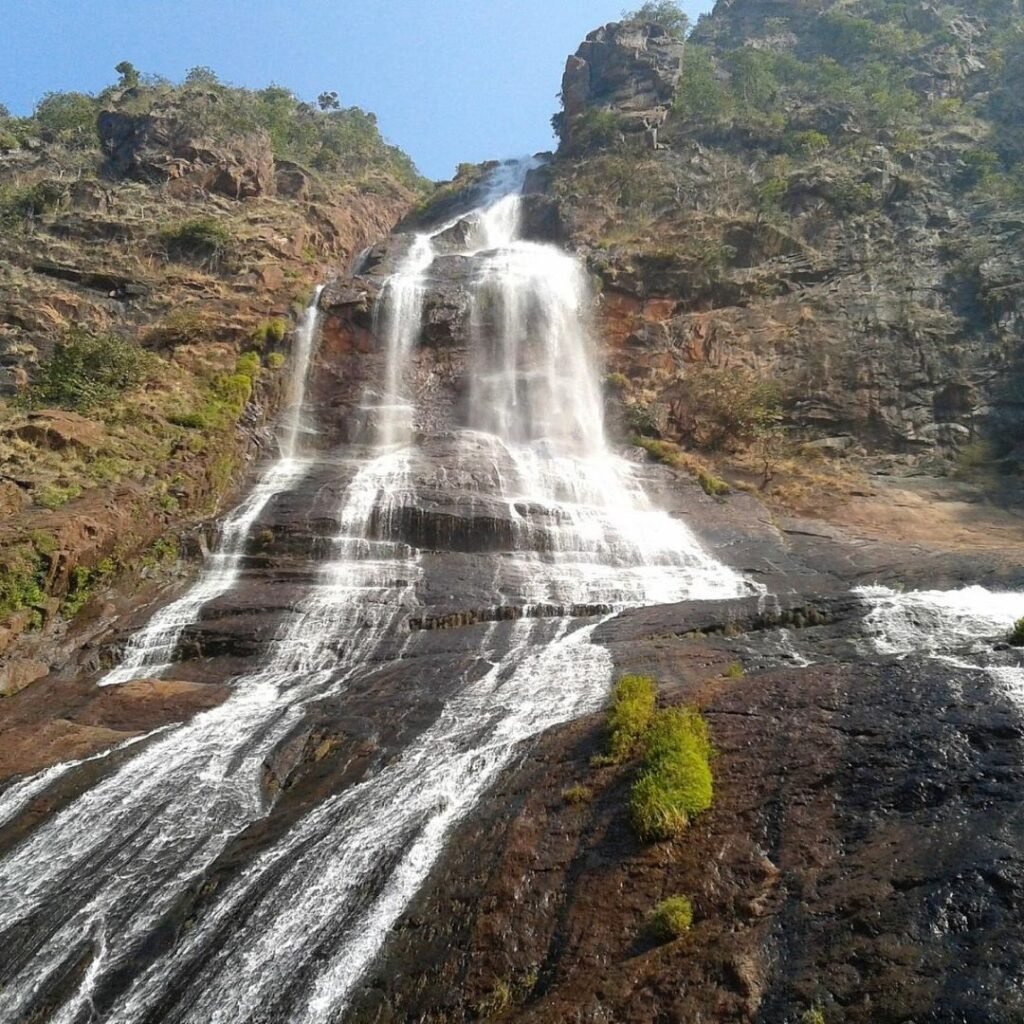
Khandadhar is Odisha’s second-highest waterfall and is shaped like a sword—hence the name. It’s surrounded by tribal lands and dense forests, making it a remote but rewarding destination.
Why It’s Magical: The unique shape and remote location offer a sense of discovery and solitude.
10. Patalpani Falls, Madhya Pradesh
- Location: Near Indore Height: ~91 meters Best Time to Visit: July to September
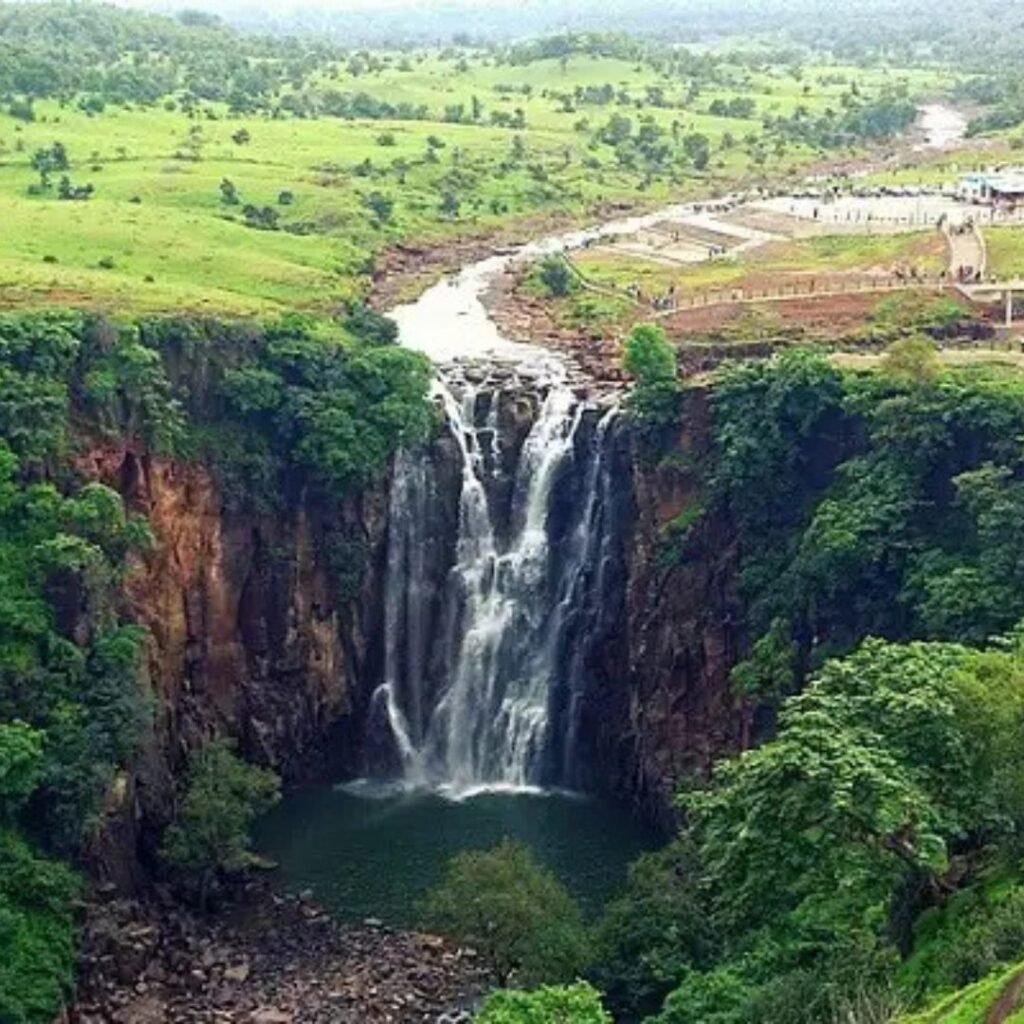
Patalpani Falls is a seasonal waterfall that comes alive during the monsoon. Legend says the depth of the pool is unknown and reaches the underworld—hence the name “Patalpani.”
Why It’s Magical: The folklore and monsoon mist add a mystical charm to the experience.
Comparison Table: Hidden Waterfalls in India
| Waterfall | Location | Height | Best Time to Visit | Unique Feature |
|---|---|---|---|---|
| Bhagsunag | Himachal Pradesh | ~20 m | Mar–Jun | Spiritual ambiance, Tibetan culture |
| Nuranang | Arunachal Pradesh | ~100 m | Mar–Oct | Historical significance, pine forests |
| Vantawng | Mizoram | ~229 m | Sep–Jan | Bamboo forests, viewing tower |
| Kune | Maharashtra | ~200 m | Jul–Sep | Monsoon beauty, three-tiered cascade |
| Thommankuthu | Kerala | ~40 m | Sep–May | Seven-step falls, forest trek |
| Irupu | Karnataka | ~52 m | Aug–Jan | Sacred site, coffee plantations |
| Chachai | Madhya Pradesh | ~130 m | Jul–Oct | Cliff drop, dramatic landscape |
| Sita | Jharkhand | ~44 m | Aug–Feb | Mythological link, tribal surroundings |
| Khandadhar | Odisha | ~244 m | Oct–Feb | Sword-shaped fall, tribal lands |
| Patalpani | Madhya Pradesh | ~91 m | Jul–Sep | Folklore, monsoon mist |
Travel Tips for Visiting Hidden Waterfalls – Hidden Waterfalls in India
- Use Local Guides: They offer insights and ensure you don’t miss hidden trails.
- Pack Light but Smart: Carry trekking shoes, insect repellent, and a waterproof jacket.
- Respect Local Culture: Many waterfalls are near tribal or spiritual sites—be mindful and respectful.
- Stay Safe: Avoid slippery rocks and strong currents, especially during monsoon.
- Leave No Trace: Carry back all waste and avoid disturbing wildlife.
Conclusion
The charm of India’s hidden waterfalls lies in their untouched beauty and the sense of discovery they offer. Far from crowded tourist trails, these secret cascades remind us that nature’s greatest wonders often hide in plain sight — waiting for those who dare to explore.
From Meghalaya’s misty cliffs to Kerala’s tropical forests, each waterfall tells a story — of adventure, peace, and the timeless rhythm of water meeting stone. As you plan your travels in 2025, skip the usual spots and follow the sound of falling water instead.
Whether you trek through the dense jungles of Maharashtra or relax by a quiet pool in Coorg, these hidden waterfalls in India promise a magical escape that refreshes both body and soul.
So pack light, tread softly, and let India’s secret waterfalls wash away your worries — because sometimes, the best journeys begin where the roads end.
FAQs
1. What are the best hidden waterfalls to visit in India?
- India is home to many hidden waterfalls like Nuranang Falls (Arunachal Pradesh), Vantawng Falls (Mizoram), Kune Falls (Maharashtra), and Thommankuthu Falls (Kerala), each offering unique scenic beauty and offbeat travel experiences.
2. Which hidden waterfall in India is the tallest?
- Khandadhar Falls in Odisha is one of the tallest hidden waterfalls in India, plunging from a height of approximately 244 meters.
3. Are hidden waterfalls in India safe for solo travelers?
- Yes, many hidden waterfalls are safe for solo travelers, especially Bhagsunag Falls and Irupu Falls. However, it’s recommended to travel during daylight and inform someone about your itinerary.
4. What is the best time to visit hidden waterfalls in India?
- The ideal time varies by region, but generally, July to February is best for most waterfalls due to monsoon-fed flow and pleasant weather.
5. Do I need permits to visit waterfalls in Northeast India?
- Yes, some waterfalls like Nuranang Falls in Arunachal Pradesh may require Inner Line Permits (ILP) for non-residents. Always check local regulations before traveling.
6. Are there any hidden waterfalls near Mumbai or Pune?
- Kune Falls near Lonavala is a stunning hidden waterfall close to both Mumbai and Pune, especially vibrant during the monsoon season.
7. Can I swim in these waterfalls?
- Swimming is allowed in some waterfalls like Thommankuthu and Bhagsunag, but always check local safety guidelines and avoid strong currents.
8. Which hidden waterfall is best for trekking enthusiasts?
- Thommankuthu Falls in Kerala offers a seven-step cascade trek through dense forests, making it ideal for adventure seekers.
9. Are these waterfalls family-friendly destinations?
- Yes, waterfalls like Bhagsunag and Irupu are accessible and suitable for families. Others may require moderate trekking and caution.
10. What should I pack for a waterfall trip in India?
- Essentials include trekking shoes, insect repellent, water bottles, snacks, waterproof gear, and a camera to capture the beauty.
11. How do I reach Nuranang Falls in Arunachal Pradesh?
- Nuranang Falls is located near Tawang and can be reached via road from Tawang town. Hiring a local taxi or guide is recommended.
12. Are there accommodations near these hidden waterfalls?
- Yes, homestays and eco-resorts are available near most waterfalls. For example, Coorg offers cozy stays near Irupu Falls.
13. What makes Vantawng Falls in Mizoram unique?
- Vantawng Falls is surrounded by bamboo forests and is the highest waterfall in Mizoram, visible from a specially built viewing tower.
14. Is photography allowed at these waterfalls?
- Absolutely! These waterfalls are perfect for nature photography. Just be respectful of local customs and avoid drones in restricted areas.
15. Are there any mythological stories linked to Indian waterfalls?
- Yes, Sita Falls in Jharkhand is named after Goddess Sita and is believed to be linked to ancient legends from the Ramayana.
16. Which hidden waterfall is closest to Indore?
- Patalpani Falls is located near Indore and is a popular monsoon destination with folklore attached to its mysterious depth.
17. Can I visit these waterfalls during the monsoon?
- Yes, monsoon enhances the beauty of waterfalls like Kune and Patalpani, but exercise caution due to slippery trails and strong currents.
18. Are there guided tours available for these waterfalls?
- Yes, local tourism boards and adventure groups offer guided treks and tours, especially in regions like Coorg, Kerala, and Mizoram.
19. What are the hidden waterfalls in Madhya Pradesh?
- Chachai Falls and Patalpani Falls are two stunning yet lesser-known waterfalls in Madhya Pradesh worth exploring.
20. How can I find more offbeat waterfalls in India?
- Follow travel blogs, local tourism websites, and platforms like Instagram or YouTube for real-time updates and hidden gems.




